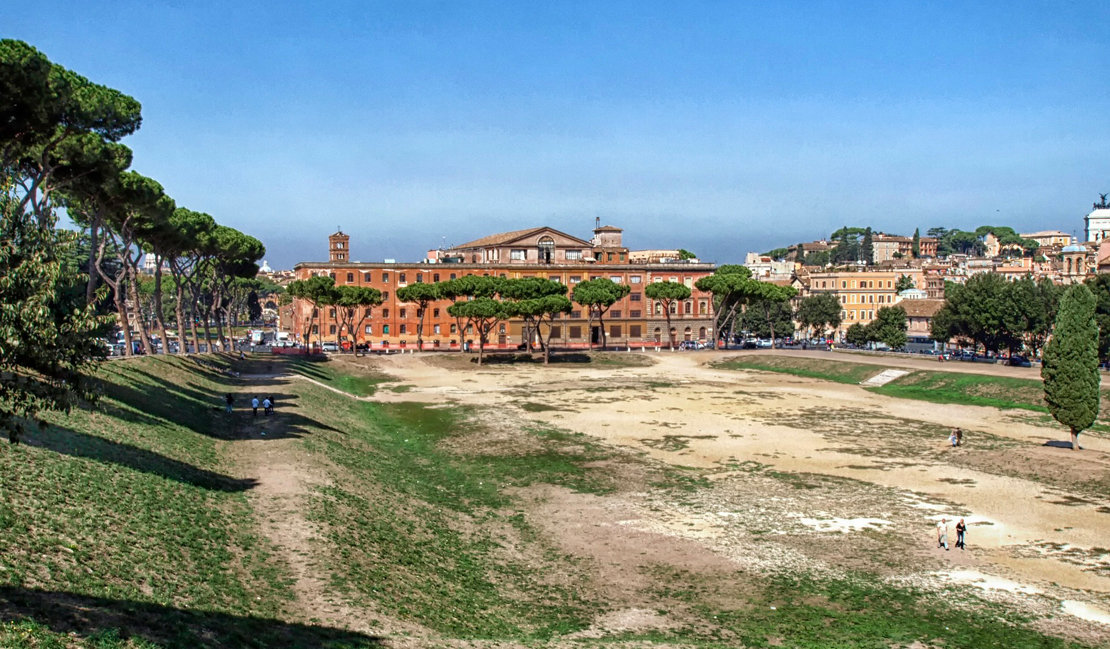The Circus Maximus is an ancient Roman chariot racing stadium and mass entertainment venue located in Rome, Italy. The stadium is located between the Aventine and Palatine hills and it was largest stadium in ancient Roman Empire. It first took its distinctive shape under Julius Ceasar. Chariot races were one of the Roman's most popular forms of entertainment.
Circus Maximus through History
The Circus was Rome's largest venue for public games related to Roman religious festivals. These games were supported by famous and important Romans citizens or by the Roman state for the people and in honor of the gods. Most were held annually or at annual intervals on the Roman calendar. Others might be given to fulfil a religious vow, such as the games in celebration of a triumph. Tarquin the Proud to Jupiter vowed the earliest known triumphal religious games at the Circus in the late regal period for his victory over Pometia. Every game ranged from one-day or even half-day events to spectacular multi-venue celebrations held over several days, with religious ceremonies and public feasts, horse and chariot racing, athletics, plays and recitals, beast-hunts and gladiator contests. With the accumulation of power, the games held at the Circus Massimo became more magnificient and elaborate. Politicians competed for divine and popular support by hosting or supporting these games. During the late Republic games were held for 57 days of the year: an unknown number of these would have required full use of the Circus. On many other days, charioteers and jockeys also used the track to practice for future events. Otherwise, it was a convenient corral for the animals traded in the nearby cattle market, just outside the starting gate. Beneath the outer stands, next to the Circus' multiple entrances, there were workshops and shops.
The most important races were held during the Roman Games, between September 4th and September 18th. Races lasted all day and often into the night, resulting up to hundred races a day. The number of the races was shortened to 5 laps to fit all of the competitions during the day. Other events held at Circus Maximus ranged from simulated battles, acrobatic routines, animal fights to religious processions. These races and events allowed social relationships among roman citizens that could enjoy pleasures as emperors did.
The stadium was damaged by fire several times over time, but the emperor always financed the restoration works. In the attempt of repairing the stadium, Circus Maximus was enlarged and it gained the dimensions it has today. One of the fires that damaged the stadium was the famous fire of Rome, for which the emperor Nero has always been accused. The last game at Circus Maximus was organized around 549 A.D.
Today, the Circus Maximus is a key part of Roman history and serves as a symbol of the Roman lifestyle today as yesterday, as it is the place where sports activities, concerts and public events are always held.
Circus Maximus, how to visit it and where it is located
The Circus Maximus is in Via del Circo Massimo. The easiest way to reach it is with the line B of the Metro, by getting off at the Colosseum metro stop and then doing a 15 minutes walk though Via Celio Vibenna and then Via di San Gregorio until the Circus Maximus. The access to the Circus Maximus is free; you won’t need a ticket as it is an open space where concerts and events are usually held. Therefore we suggest you to give a walk inside the path and imagine chariots running, gladiators fighting and the public roaring.



 EN
EN  ES
ES  DE
DE  FR
FR  IT
IT 